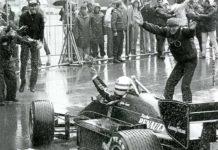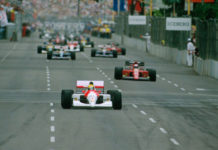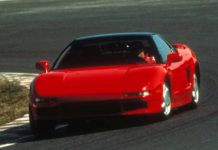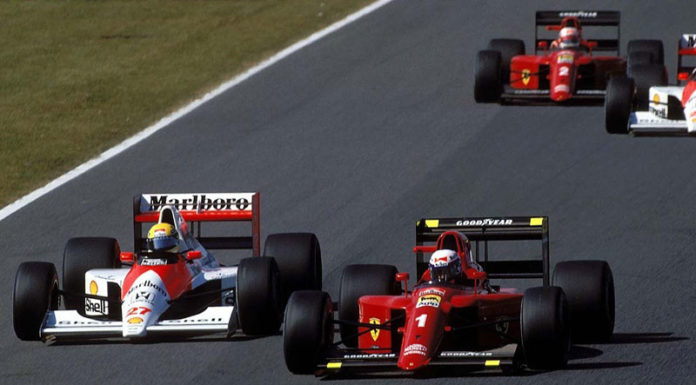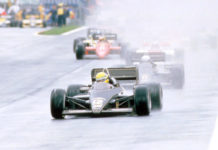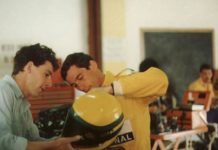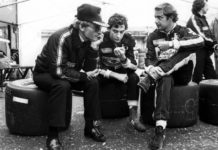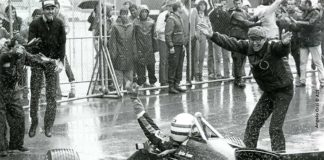The film begins at his first podium in Formula1 – the 1984 Monaco Grand Prix where he finished second to Alain Prost in the Toleman.
From there it looks at his three-year stint with Lotus, his highly successful 6 years with McLaren, and of course ends with his untimely death at the 1994 San Marino Grand Prix and his funeral. The film shows what we all knew about him as a driver – his undoubted speed and ruthlessness to win. The scenes around his first F1 win in Estoril in 1985 are something to watch out for!
The film also reflects on the two most controversial moments of his career – his collisions with Alain Prost in 1989 and 1990, and shows pieces of film never before seen by the public on both incidents.
Although it ignores the two major incidents between the two that precedes these events (1988 Portugese Grand Prix, where Senna pushed Prost towards the pit wall; and the 1989 San Marino Grand Prix, where Senna broke a pre-race agreement between the two to overtake Prost), it’s focus and coverage of 1989 and 1990 were very good – despite the slightly pro-Senna angle. The coverage from the time that we are able to see for the first time gave me a glimpse of the politics behind the sport, rather than the sporting side of it.
The film shows how he was affected by accidents to other drivers (notably Barrichello and Ratzenberger at his final race weekend), and how much Ayrton was emotionally attached to the sport that weekend. Watching it makes you feel he was distracted that weekend, and that he just didn’t seem himself at all. The scenes after he hit the wall at the Tamburello corner are very hard to watch as an F1 fan, and the pain from that weekend can still be felt watching these pictures all over again.
But the main thing that comes from the film was his ability behind the wheel. There is no doubt that Ayrton Senna has been one of the greatest drivers to grace a Formula 1 car. His unrivalled will to win comes through to the fore in the film, and his God-like status in his homeland is clear for all to see.
